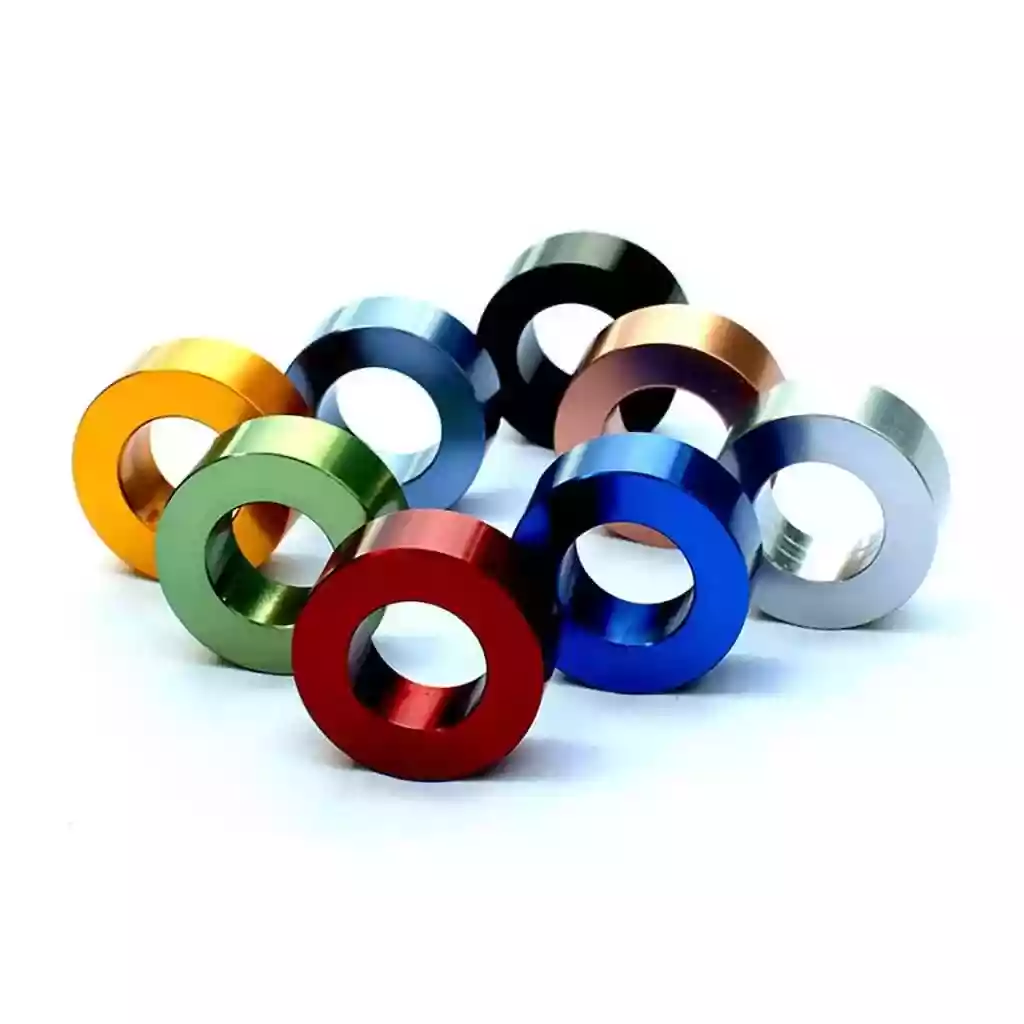
Anodizing is an electrochemical process that converts the metal
surface into a decorative, durable, corrosion-resistant, anodic oxide finish. The ideal metal suited for anodizing is Aluminum. However, other nonferrous metals, such as titanium and magnesium, can also be anodized.
The anodic oxide structure is entirely made of aluminum oxide and is
derived from the aluminum substrate. This aluminum oxide isn’t painted or plated on the surface; instead, it’s merged with the underlying aluminum substrate so that it won’t chip or peel. It has a porous, highly organized structure that permits secondary processes like coloring and sealing.
Anodizing is done by immersing Aluminum in an acid electrolyte solution and then sending an electric current across it. The interior of the anodizing tank has a cathode, and the aluminum functions as an anode, allowing oxygen ions from the electrolyte to join with the aluminum atoms on the anodized part’s surface. As a result, anodizing is a process of carefully regulated oxidation that enhances naturally occurring phenomena.
There are several benefits of Anodizing metals. This includes creating a powerful bond against abrasions, fade resistance, graffiti resistance, long
lifespan, allowing electrical insulation, easy upkeep, and being environmentally friendly. Anodizing also allows Aluminum to maintain its metallic appearance while being a cost-effective approach (lower initial finishing cost combined with low maintenance cost in the long run).
Anodizing is known for offering a large increasing number of gloss and color alternatives and minimizes or eliminates color variations. Any specific tint can be added onto the surface of the metal during the process of anodizing. There are many different colors to choose from, starting from anything dark to light colors. This color is also chip/peel resistant, unlike other forms of coating and painting.
Anodizing metal surfaces is commonly seen in industrial applications. While there are several uses for anodizing metal surfaces; these are a few of the industrial benefits:
– Fused Mechanisms
– Hydraulic Valve Forms
– Mechanical Hardware
– Aircraft Instruments
– Aerospace Instruments
– Precision Mechanisms
– Fused Assembly Mechanisms
For many years, chromic acid anodizing has been used to preserve Aluminum against oxidation. The anodizing procedure creates a basic oxide layer that provides a foundation for the tubular cell structure. After that, the porous cell structure is converted to trihydrate aluminum oxide, which is subsequently sealed with hot water.
The most frequent procedure for anodizing is with sulfuric acid. The sulfuric acid anodize method produces films that are between .0001″ and .00001″ thick. The coating’s total thickness is 67 percent penetration in the substrate and a 33 percent increase over the part’s initial dimension.
This method of anodizing is particularly suited for applications that require the metal to be hard and resistant to abrasion. Type II anodizing is known for providing greater wear resistance and a smoother, harder finish – making it an ideal process for transforming surfaces of Aluminum and all other kinds of nonferrous metals.
Hard coat anodizing, also known as designed anodizing, may be created in thicknesses ranging from 13 to 150 m (0.0005′′ to 0.006′′). It is generally used for applications that require corrosion, abrasion, and wear-resistant coating. It utilizes a sulfuric acid-based electrochemical process with low bath temperatures.
Hard coat or Type III anodizing is known for increasing wear resistance, corrosion resistance, and giving metals additional features such as better lubricant retention and PTFE coatings. It also provides better thermal and electrical insulation.
The ideal metal suited for anodizing is Aluminum, and via anodizing, Aluminum is able to maintain its metallic appearance. While Aluminum does have a natural oxide coating, it is generally uneven, thin, and provides inadequate protection. The electrochemical passivation process that converts the surface layer of an aluminum substrate into an aluminum oxide layer is known as Aluminum anodizing. Controlled electrical charge application in an acidic electrolytic bath produces a very regular and uniform coating with better durability, wear, and corrosion resistance. These anodic coatings can also be subjected to secondary processing in order to add functional ingredients like colorants or lubricants.
Titanium anodizing is an electrolytic finishing procedure that uses an electric current to modify the oxide layer on the surface of the titanium. The titanium object serves as the anode (positive electrode) in an electrolytic cell. Titanium anodizing is known for hardening and coloring the surface of titanium components while not altering any surface properties. Via anodizing, a wide range of colors can be produced on titanium.

Copyright © 2023 Maxim Metal Finishing